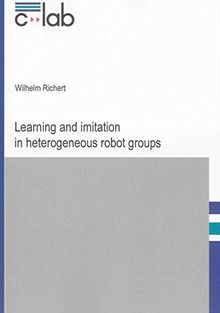
As robots become increasingly affordable, they are used in ever more diverse areas in order to perform increasingly complex tasks. These tasks are typically preprogrammed by a human expert. In some cases, however, this is not feasible - either because of the inherent complexity of the task itself or due to the dynamics of the environment. The only possibility then is to let the robot learn the task by itself. This learning process usually involves a long training period in which the robot experiments with its surroundings in order to learn the desired behavior. If robots have to learn a shared goal in a group, the robots should imitate each other in order to reduce their individual learning time. The question how this can be done in a robot group has been considered in this thesis, i. e., how robots in a group can learn to achieve their shared goal and imitate each other in order to increase the performance and the speed of learning by spreading the learned knowledge in the group.
To allow for this intertwined learning and imitation, a dedicated robot architecture has been developed. On the one hand, it fosters autonomous and self-exploratory learning. On the other hand, it allows for manipulating the learned knowledge and behavior to account for new knowledge gathered by the imitation process. Learning of behavior is achieved by separately learning at two levels of abstraction. At the higher level, the strategy is learned as a mapping from abstract states to symbolic actions. At the lower level, the symbolic actions are grounded autonomously by learned low-level actions.